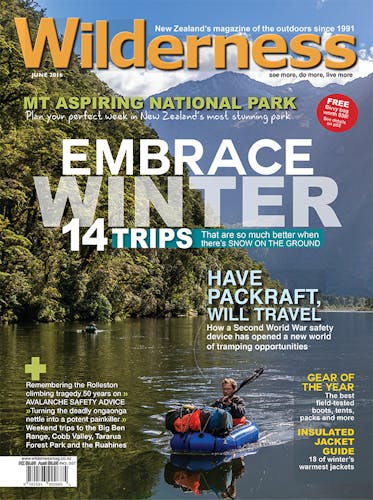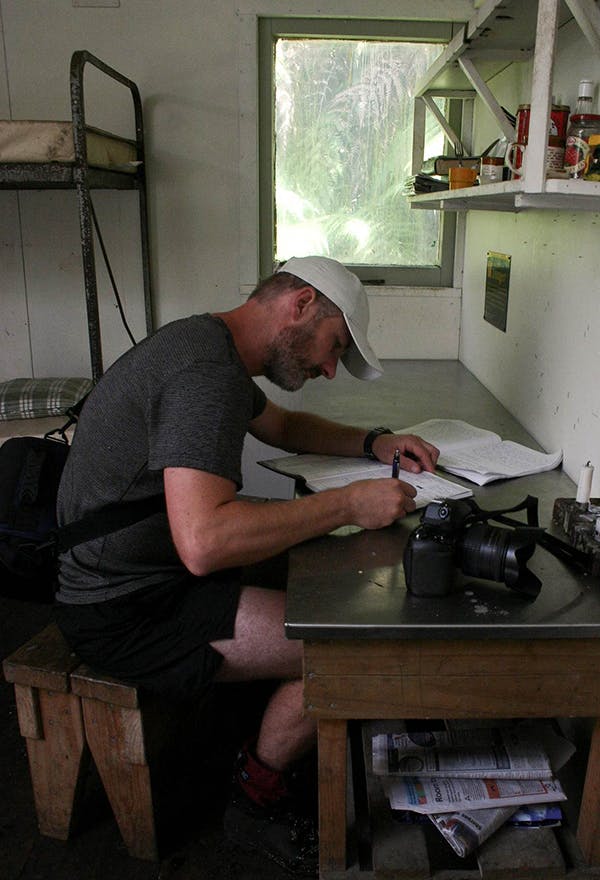It’s the hut network as a whole that is important, not how often individual huts are used
Recently there has been a DOC media push asking hut users to make sure they fill in hut books. The message has contained the suggestion that if there isn’t better compliance, some huts may not have the numbers to reach some arbitrary threshold to justify future maintenance.
To be clear, there are many good reasons trampers, hunters and climbers should fill in the hut books, but contributing to a management-by-numbers data set is not one of them. The recording of data, be it track counters or counting up the number of entries in a hut book, has been used to aid decision making for years. But there has also been creeping and unjustifiable emphasis on it, to the point where it is now approaching hysteria levels. The argument for a numbers-based approach is that there has to be some form of measure to gauge the quality of DOC spending. The current DOC buzzwords for this data-driven approach is ‘Destination Management Framework’ (DMF). The problem is it is such unsophisticated analysis it simply doesn’t deliver quality spending, or fit most people’s concept of conservation.
We all know figures can just as easily be used to mislead rather than inform, but raw data like the number of hut book entries falls a long way short of accurately assessing the value of a facility to a community. DOC huts and tracks closer to bigger cities are always well used, but they also complement the recreation provision by local councils. DOC is merely one player in a bigger offering.
More remote communities, with councils which often struggle to retain an adequate rating base, often rely on DOC for the bulk of their local recreation provision. The West Coast is a prime example and the raw bed nights approach takes no account of this basic fact. How do you compare a low-use hut valuable to a couple of small Southland schools to something like Pinnacles Hut, which is used by multiple North Island schools?
Raw data also takes no account of the value of a facility to safety. Many huts in Canterbury were put in strategic locations next to flood-prone rivers. In fine weather, some valleys can feel like they have ‘too many huts’, and then it rains and you are thankful for every last one of them.
The numbers game can just as equally result in over-investment where DOC has upgraded things that really did not need upgrading, or used high-use figures to justify a gold plated upgrade. For many years it has been self-evident that most of the money in the DOC recreation budget has been put towards the facilities that are most used but there has not been the same degree of rigorous analysis on the quality of spending. People who have followed this discussion sometimes ask that if only some DOC head office bean counters would put some of their own front country expenditure under a similar microscope as for the backcountry facilities then the budgets might get a little closer to lining up with the job at hand (did we really need to spend $300,000 on X when $200,000 would have done a perfectly good job?).
While I understand that government departments feel naked and exposed without data, it still needs to be kept in context and not distract from the overall goal of a conservation department. For me, the over emphasis on numbers is an unnecessary distraction from the unambiguous meaning of conservation – it’s about what we pass on to the next generation.
As a parent of three budding young trampers, I look at the hut network in a completely different way to the accountancy approach. For me, it’s the network as a whole that is important. The huts that my children might visit in 20 years time, which may or may not be remote and rarely visited huts, are just as important as the popular, more well-used places I’m taking them to right now. This approach doesn’t involve second-guessing what we think the trends might be in 20 years based on current trends.
Our collective responsibility to that is really quite simple. I’m eternally grateful to the previous generations who built up the hut network for the opportunities those huts have given me. The only way to repay them is to ensure this network carries on pretty much intact. That should be a conservation bottom line and the driving force behind any policy towards huts and tracks.
Conservation is all about working out how best to pass on to the next generation what we have enjoyed in as good a condition as possible. That means not using data to prop up expediency, but instead working out new ways of doing things rather than the semi-blind accountancy approach of chopping some costs out where you think you can get away with it.








